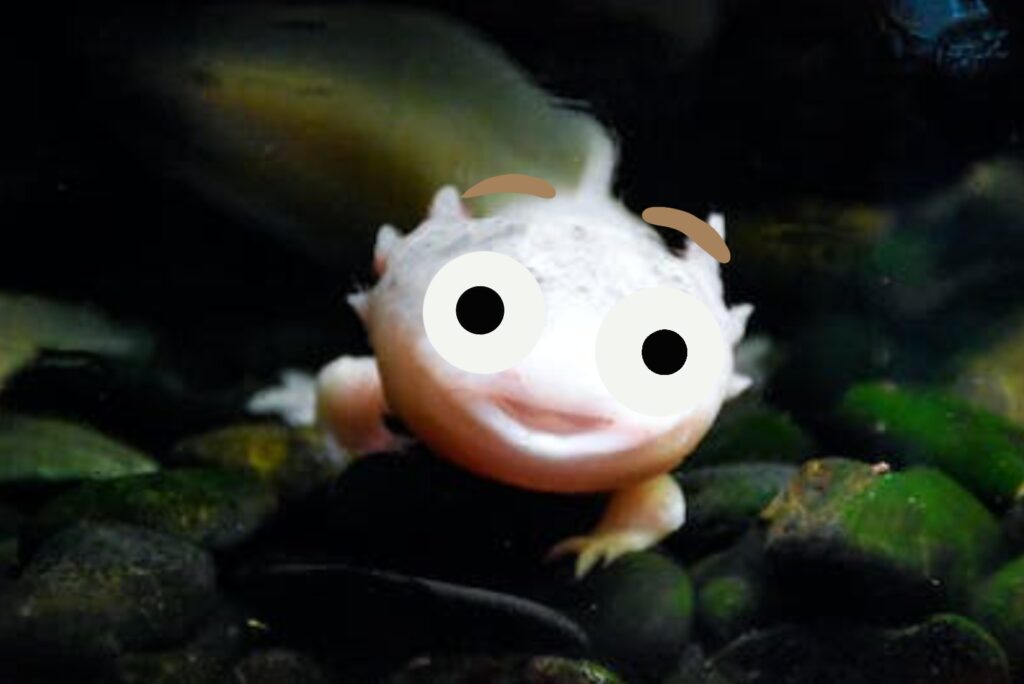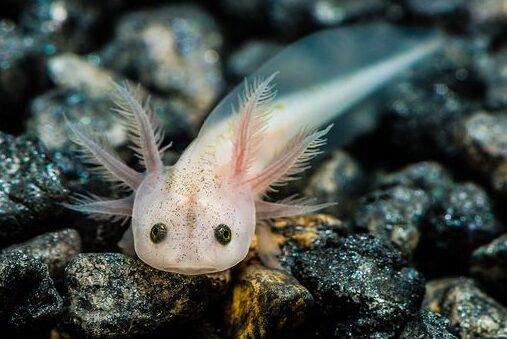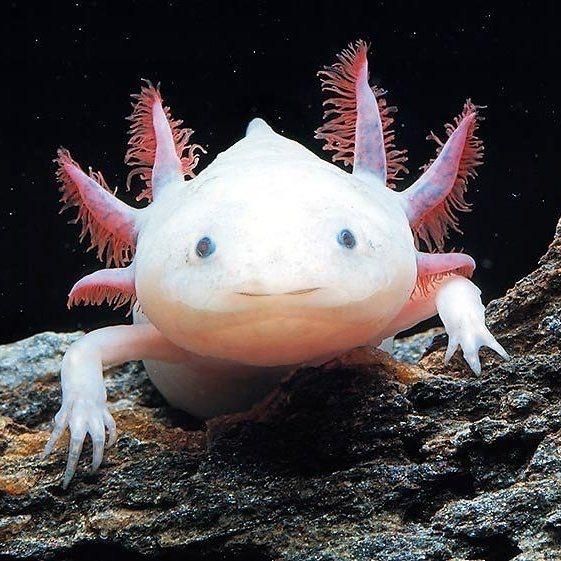
If you find your axolotl fixating its gaze on you, fear not—it’s likely a sign of engagement rather than bewilderment. Axolotls are naturally inquisitive beings, and staring is a manifestation of their curiosity. Much like humans observe their surroundings to understand the world, axolotls stare to take in their environment and the beings within it. This behavior is often a display of interest and recognition, indicating a bond between you and your aquatic companion. “Why Does My Axolotl Stare at Me”
Reasons Behind the Axolotl Stares
Understanding the motives behind your axolotl’s prolonged stares can foster a deeper connection. One significant reason is their inherent natural curiosity, prompting them to scrutinize their surroundings for mental stimulation. Additionally, hunger and anticipation play a role, especially if feeding time is near. Axolotls may stare in anticipation of a forthcoming meal, showcasing their instinctual behavior tied to survival.
The duration of axolotls’ lives, including How Long Do Axolotls Live, contributes to their unique behavior, such as constant staring. Axolotls are curious creatures, and their gaze is often a result of their inquisitive nature. Incorporating Best Aquarium Air Stones For Axolotl and maintaining an enriched environment can enhance their well-being and reduce stress-related behaviors.
Natural Curiosity
Axolotls, often described as smiling aquatic creatures, possess an innate curiosity that rivals that of a cat. Their staring behavior is an expression of this curiosity, as they visually explore their environment. Providing a diverse and enriched tank environment with hiding spots, plants, and interesting decorations can channel their curiosity positively, reducing excessive staring.
Hunger and Anticipation
Axolotls are creatures of habit, and when it comes to food, their anticipation is palpable. If your axolotl stares at you with intensity, it might be signaling its expectation of a forthcoming meal. Maintaining a consistent feeding schedule and paying attention to their feeding habits can help address this behavior and ensure their nutritional needs are met.
Recognition of Owners
Contrary to the notion that fish and amphibians lack the capacity for recognition, axolotls can distinguish their owners. Staring is often a way for them to acknowledge your presence and express familiarity. Spending quality time near the tank and engaging in gentle interactions can strengthen this recognition and the bond between you and your axolotl.
Environmental Changes
Axolotls are sensitive to changes in their environment, and staring can be a response to alterations in light, temperature, or other external factors. Ensuring a stable and comfortable habitat can help reduce stress and diminish excessive staring. Monitoring and maintaining consistent tank conditions contribute to a harmonious cohabitation with your axolotl companion.
Is Staring a Common Behavior of an Axolotl?
Wondering if your axolotl’s intense gaze is a common trait among these aquatic wonders? The answer is a resounding “yes.” Staring is a prevalent behavior observed in axolotls, and it’s not a cause for concern. In fact, it’s a fascinating aspect of their communication and interaction with their environment and caretakers.
Yes, It’s Normal
If your axolotl seems to have a penchant for staring, rest assured that this behavior falls well within the realm of normalcy for these unique creatures. Axolotls are known for their quirky and endearing behaviors, and staring is just one of the many ways they express themselves. This behavior is a testament to their inquisitive nature and their keen awareness of their surroundings.
Varying Degrees of Staring
Much like humans, axolotls exhibit individual personalities, and this extends to the degree of staring they engage in. Some axolotls may be more reserved in their staring, while others might boldly fixate on their surroundings. Factors such as their upbringing, experiences, and even their health can influence the intensity and frequency of their staring behavior.
Communication Through Staring
For axolotls, staring is more than just a curious glance—it’s a form of communication. These aquatic beings might use prolonged stares to convey various messages. Whether expressing curiosity, contentment, or even signaling a need, their eyes become a window into their thoughts. As a conscientious owner, paying attention to the context and accompanying behaviors can provide valuable insights into your axolotl’s emotional state.
How to Deal with the Staring Axolotl

If your axolotl has mastered the art of staring and you’re looking for ways to manage or embrace this behavior, fret not. Dealing with a staring axolotl involves understanding their needs and creating an environment that fosters their well-being and natural behaviors.
Dealing with a staring axolotl, particularly “White Albino Axolotls,” is a common curiosity. Axolotls are naturally inquisitive, and staring is their way of observing their surroundings. Ensure they have adequate hiding spots in the tank, maintaining their comfort. Regular interactions and providing a suitable environment can foster a positive relationship with your axolotl.
Ensure Basic Needs
Before delving into behavior management, it’s crucial to ensure that your axolotl’s basic needs are met. Regularly check water quality, temperature, and filtration systems to create an optimal habitat. Axolotls are sensitive to changes in their environment, and meeting their fundamental needs contributes to their overall contentment, potentially reducing excessive staring.
Provide Enrichment
Axolotls, despite their seemingly calm demeanor, benefit from mental and physical stimulation. Enhance their living space with hiding spots, aquatic plants, and engaging decorations. Adding variety to their environment not only satisfies their natural curiosity but also offers opportunities for exploration, potentially diverting their attention from persistent staring.
Maintain a Consistent Routine
Axolotls thrive on routine. Establish a regular feeding schedule, and interact with your aquatic friend at predictable times. Consistency in your actions helps axolotls feel secure and reduces stress, potentially minimizing staring behavior. This routine also enables you to observe any changes in their behavior, allowing for timely adjustments to their care.
FAQs
1. Why does my axolotl stare at me for long periods?
Axolotls are naturally curious creatures, and extended staring may indicate interest or recognition of their owner.
2. Is it normal for axolotls to stare more at certain times?
Yes, factors like feeding times or changes in the environment can influence the frequency of axolotl staring.
3. Can staring be a sign of illness in axolotls?
While staring is typically normal behavior, sudden and drastic changes in behavior can sometimes indicate health issues. Consult a vet if concerned.
4. How can I tell if my axolotl is hungry when it stares at me?
Regular feeding schedules and observing other signs of hunger, like increased activity near feeding time, can help gauge their appetite.
5. Should I be worried if my axolotl rarely stares?
Not necessarily. Axolotls have varying personalities, and some may be less prone to staring. Monitor for overall health and behavior changes.
6. Can I train my axolotl to stare less?
While staring is a natural behavior, providing enrichment and a stable environment can minimize excessive staring.
7. What if my axolotl stares at its reflection?
Introduce decorations or background to the tank to reduce reflections, as continuous staring at their own reflection may cause stress.
8. Is it safe to stare back at my axolotl?
Yes, maintaining eye contact can be a way to interact with your axolotl, strengthening the bond between the pet and the owner.
9. Can axolotls see well, and does this affect their staring behavior?
Axolotls have relatively poor eyesight, but they can sense movement. Staring may be a way for them to focus and understand their surroundings.
10. Should I be concerned if my axolotl suddenly stops staring?
Abrupt changes in behavior, including a sudden cessation of staring, can be a cause for concern. Monitor for any other signs of distress or illness.
Conclusion
In the enchanting world of axolotls, their quirky behaviors, including the infamous staring, add a layer of fascination to the experience of being their caretaker. As we’ve explored the various facets of axolotl staring, it becomes evident that this behavior is deeply rooted in their natural instincts, curiosity, and communication patterns.
Understanding the reasons behind axolotl staring is the first step in building a strong bond with these aquatic companions. From the recognition of their owners to the anticipation of feeding times, each gaze is a silent but expressive form of interaction. Moreover, acknowledging that staring is a common behavior among axolotls dispels any concerns an owner might have and allows for a more enriched relationship.
With 3 years of devoted companionship alongside my aquatic friend, Bob, I’ve gained profound insights into the captivating world of fishkeeping. From understanding behavior to ensuring optimal health, my journey with Bob has enriched my expertise in all things aquatic.




Pingback: Axolotl Skin Care: A Complete Guide - Fish Hue
Pingback: Are Axolotls Aggressive? - Fish Hue
Pingback: Axolotl Vision: A Comprehensive Guide - Fish Hue
Pingback: What Do Axolotls Eat? Know About 50+ Foods - Fish Hue